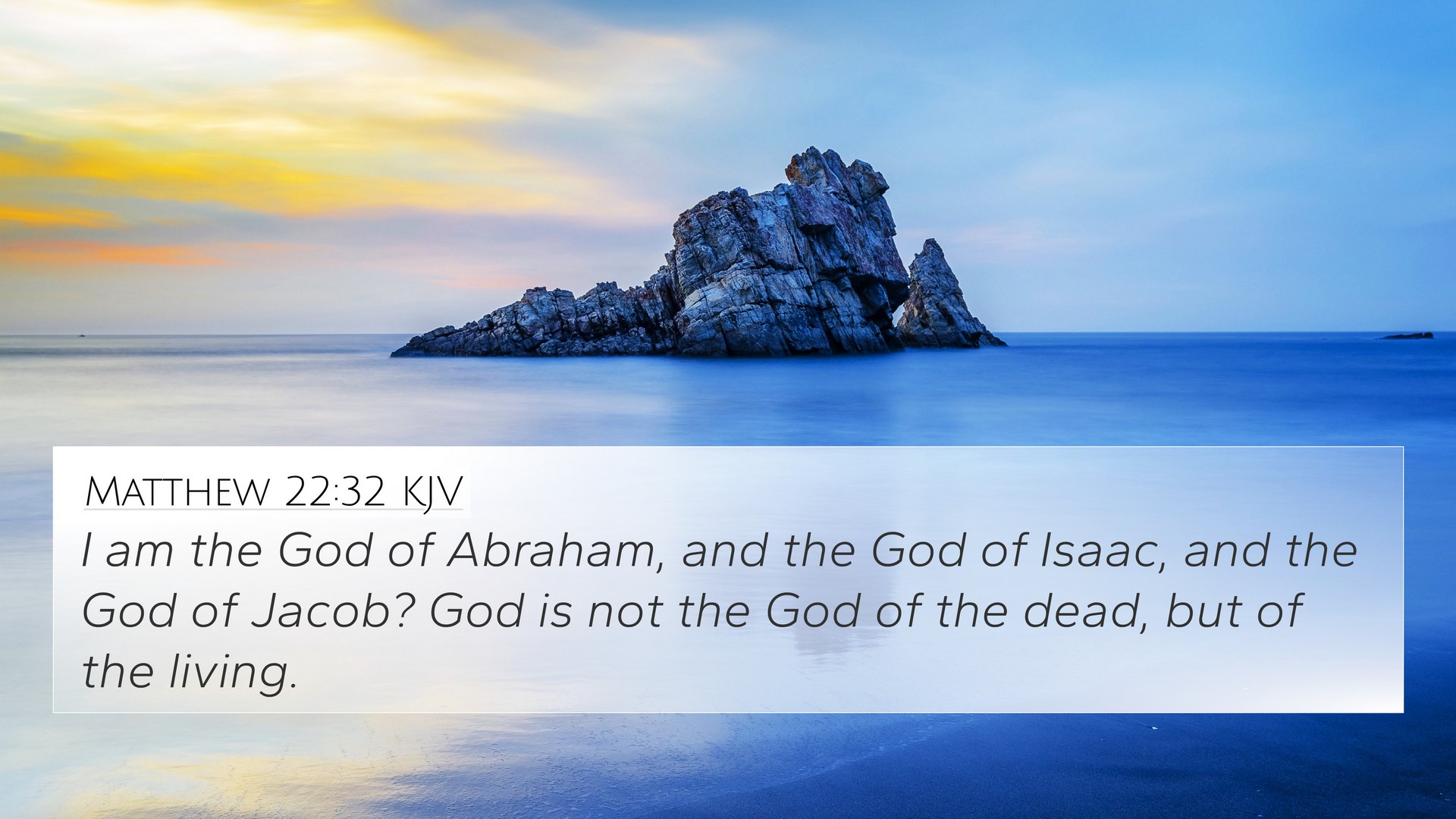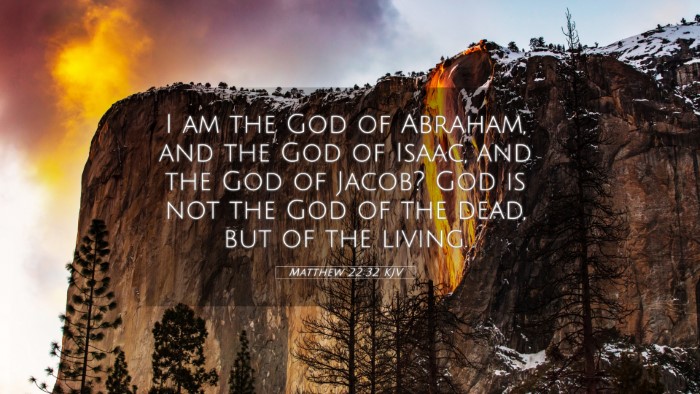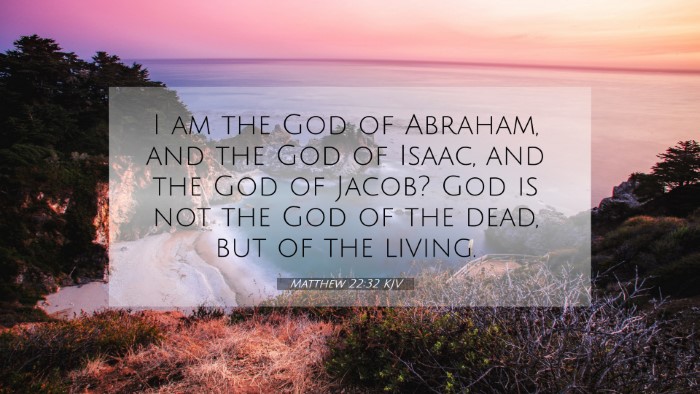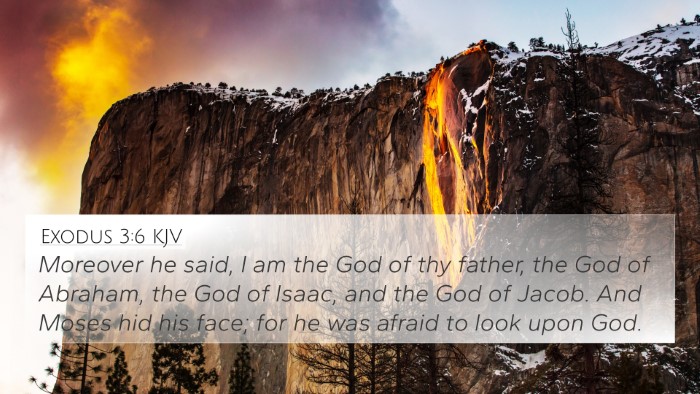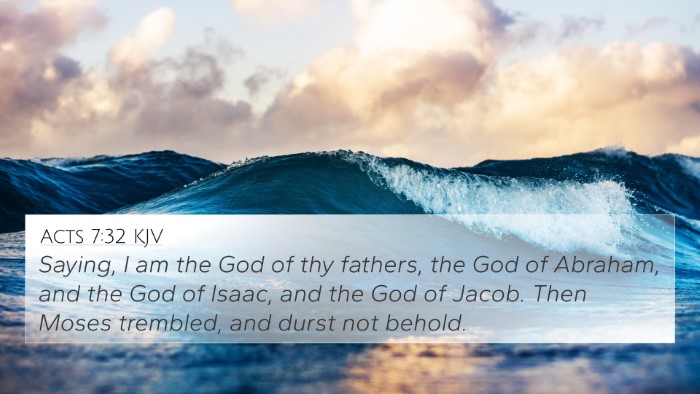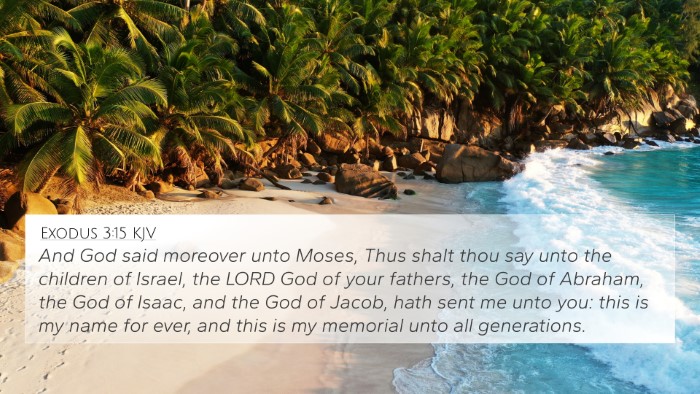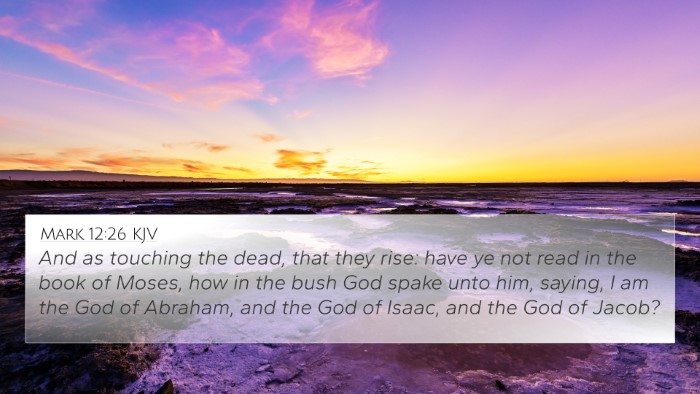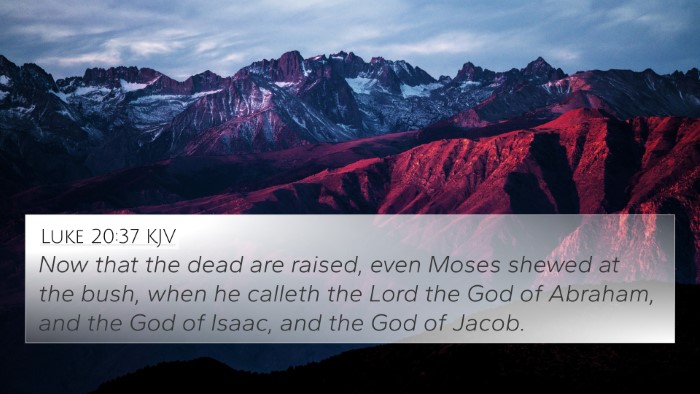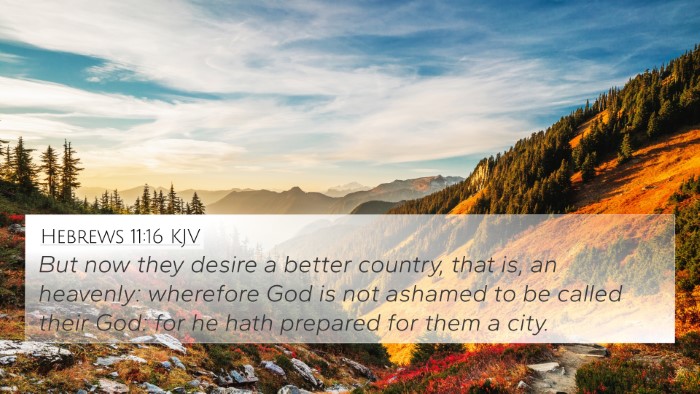Understanding Matthew 22:32
Verse: "I am the God of Abraham, and the God of Isaac, and the God of Jacob. God is not the God of the dead, but of the living." (Matthew 22:32)
This verse, spoken by Jesus, holds profound theological significance. It responds to the Sadducees who denied the resurrection, illustrating the essential belief in life after death and God's ongoing covenant with His people.
Key Themes and Insights
- God's Nature: The affirmation of God as the God of Abraham, Isaac, and Jacob emphasizes God's eternal relationship with His faithful followers.
- Resurrection of the Dead: Jesus' declaration highlights that God is a God of the living, therefore affirming the reality of resurrection.
- Covenantal Context: This verse connects the Old Testament patriarchs with New Testament hope, underscoring the continuity of God’s promises throughout Scripture.
Commentary Insights
Matthew Henry's Commentary
Matthew Henry points out that Jesus uses this declaration to demonstrate how the Sadducees' misunderstanding of the Scriptures leads to their denial of life after death. By identifying Himself with the patriarchs who had died, Jesus illustrates that their existence continues in the presence of God.
Albert Barnes' Commentary
Albert Barnes emphasizes the importance of the phrase "I am," stating that it indicates a present relationship that transcends death. God’s eternal nature assures believers that their hope in resurrection is grounded in His character.
Adam Clarke's Commentary
Adam Clarke notes that this verse is an explicit reaffirmation of faith in life after death. He stresses the importance of understanding God's promises, urging believers to see this declaration as a foundation for their own faith in eternal life.
Connections Between Bible Verses
Matthew 22:32 can be linked with various other Scriptures, illustrating the broader Biblical themes of resurrection, God’s faithfulness, and the nature of eternal life. Here are some significant cross-references:
- Exodus 3:6: God identifies Himself as the God of the patriarchs, affirming their ongoing relationship with Him.
- Luke 20:38: A parallel account where Jesus reiterates that God is not the God of the dead, but of the living.
- John 11:25-26: Jesus declares Himself as the resurrection and the life, further confirming the hope of resurrection.
- Romans 6:5: Paul teaches about being united with Christ in His resurrection.
- 1 Corinthians 15:20-22: The resurrection of Christ is the firstfruits of those who have died.
- Hebrews 11:16: The faithful longed for a better country, indicating hope in eternal life.
- Revelation 20:6: Blessed are those who share in the first resurrection, affirming faith in life after death.
Exploring the Themes
The themes present in Matthew 22:32 open discussions about God's unchanging character and the promises fulfilled through Christ, inviting believers to engage in thematic Bible verse connections. This verse acts as a pivot for understanding hope in resurrection and the enduring nature of God's covenant.
Cross-Referencing Biblical Texts
In order to enhance your study experience and understanding of Matthew 22:32, utilizing tools for Bible cross-referencing can be incredibly beneficial. Here are some methods and resources:
- Bible Concordance: A tool that lists words and phrases in the Bible and helps you find related verses.
- Bible Cross-Reference Guide: A comprehensive guide used for discovering interrelated verses in Scripture.
- Cross-Reference Bible Study: A methodical approach to Bible study that focuses on examining the connections between texts.
- How to Use Bible Cross-References: Learning techniques for effectively identifying and utilizing referenced scriptures for deeper understanding.
- Bible Reference Resources: Various tools and software that provide extensive links between Scripture verses.
- Cross-Referencing Bible Study Methods: Specific methodologies that aid in cross-referencing through thematic and narrative analysis.
Conclusion
Matthew 22:32 serves as a profound affirmation of faith in the resurrection and the eternal nature of God’s covenant with His people. Through exploring cross-references and engaging with the insights from public domain commentaries, believers can cultivate a deeper understanding of Scripture and its interwoven themes. Recognizing the connections between various Bible verses not only enriches personal faith but also enhances contextual understanding.
